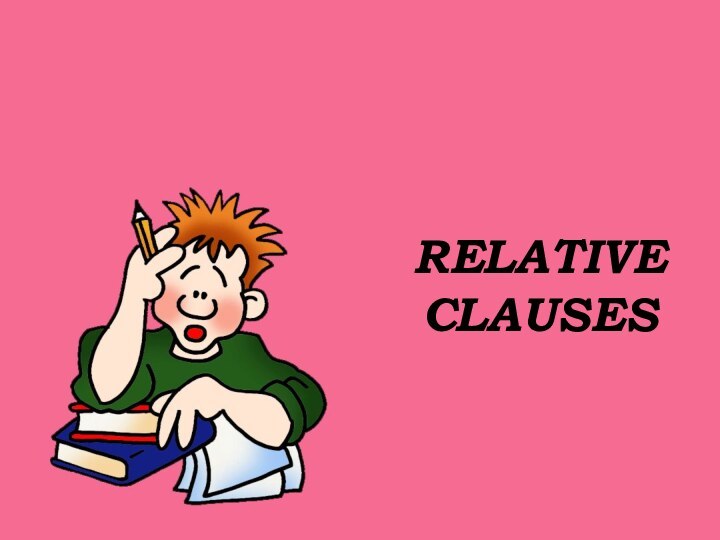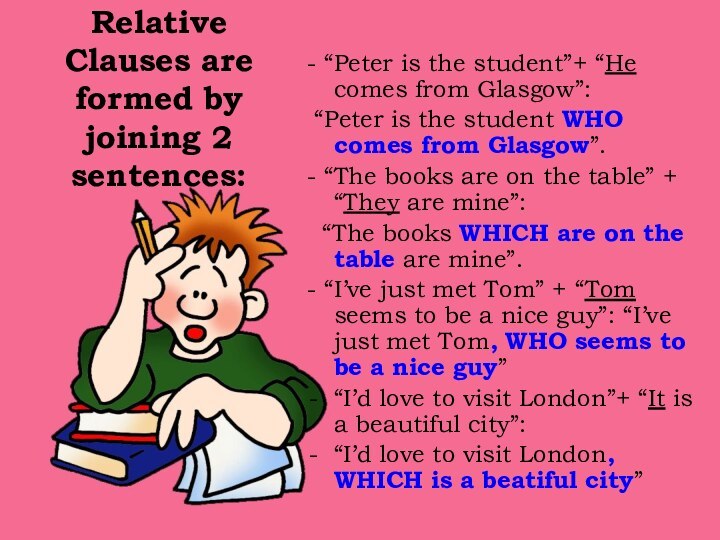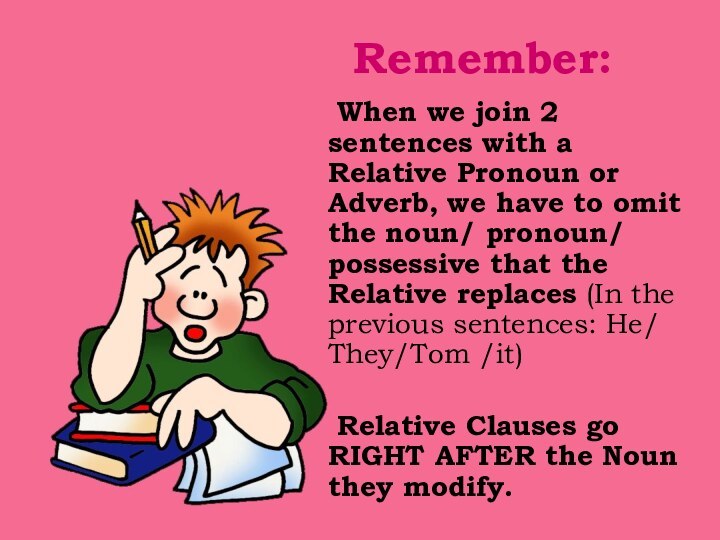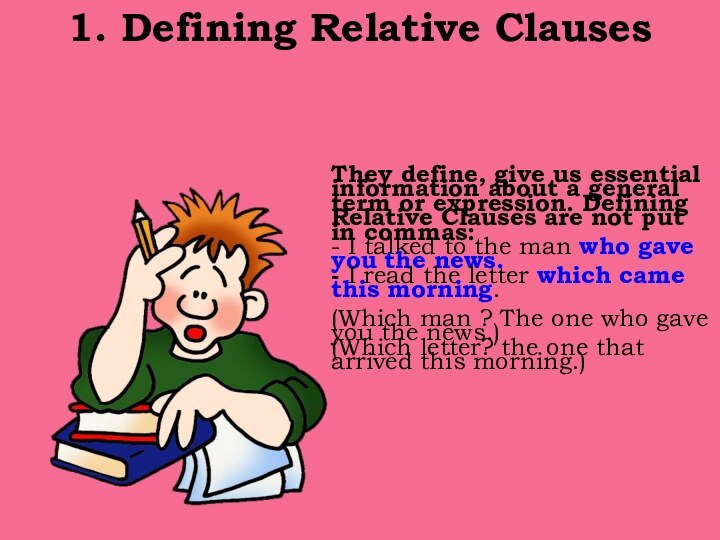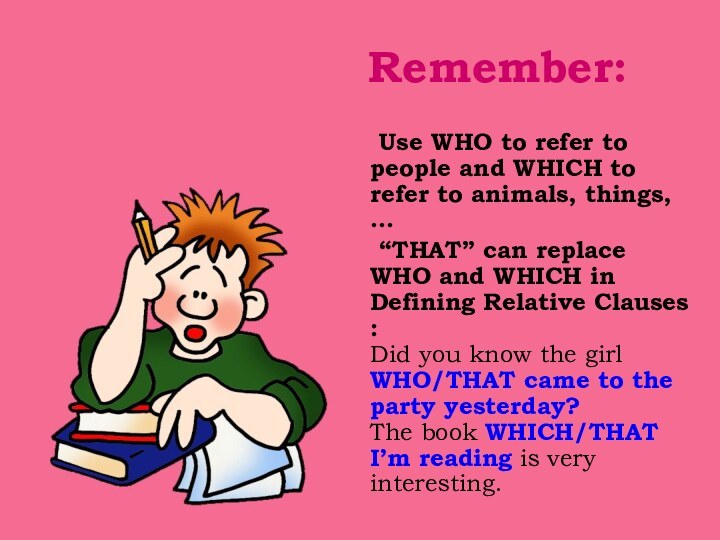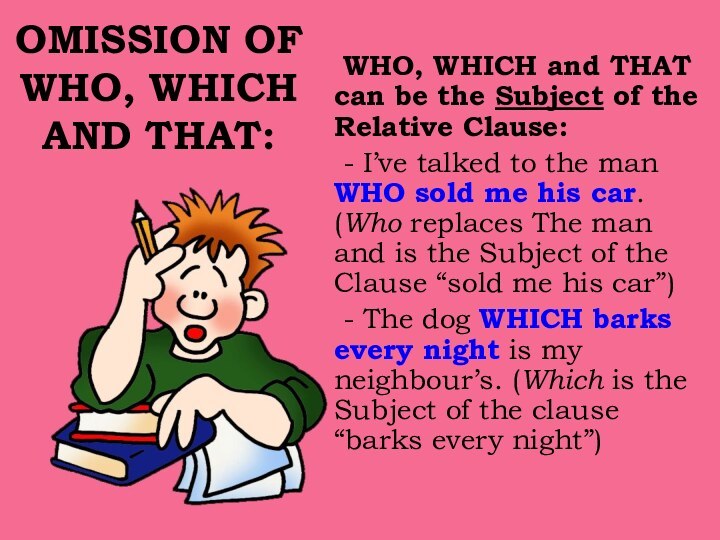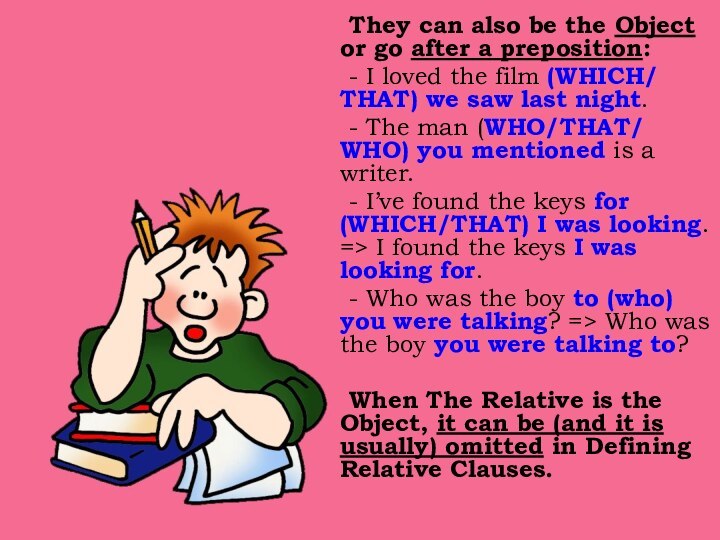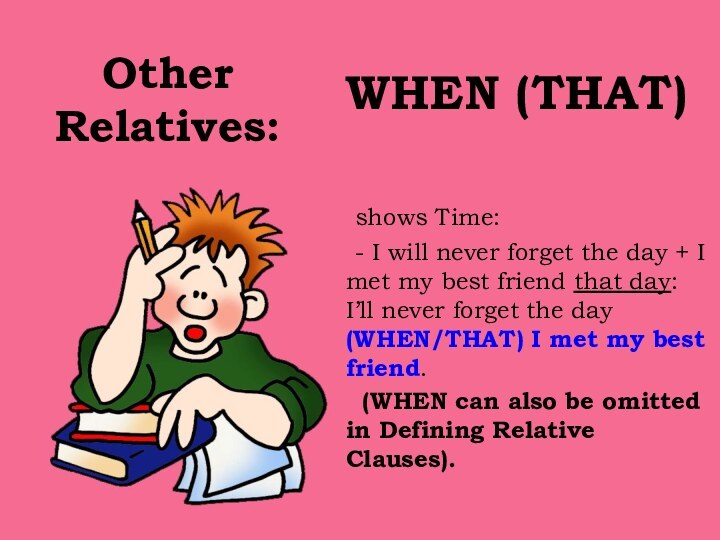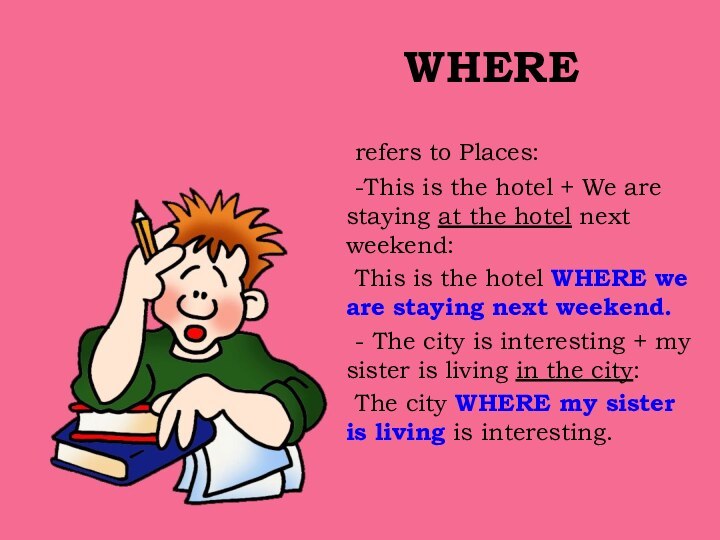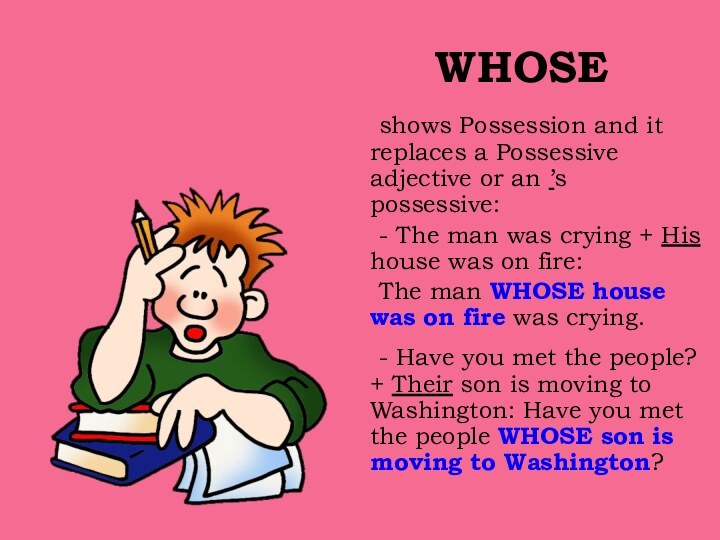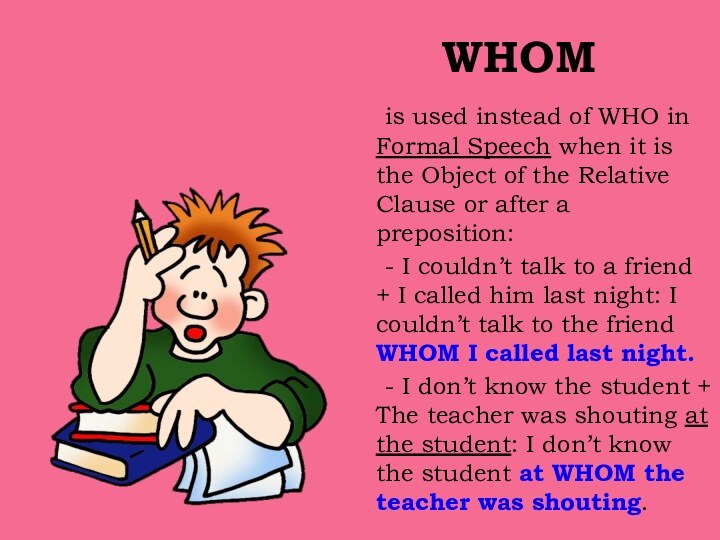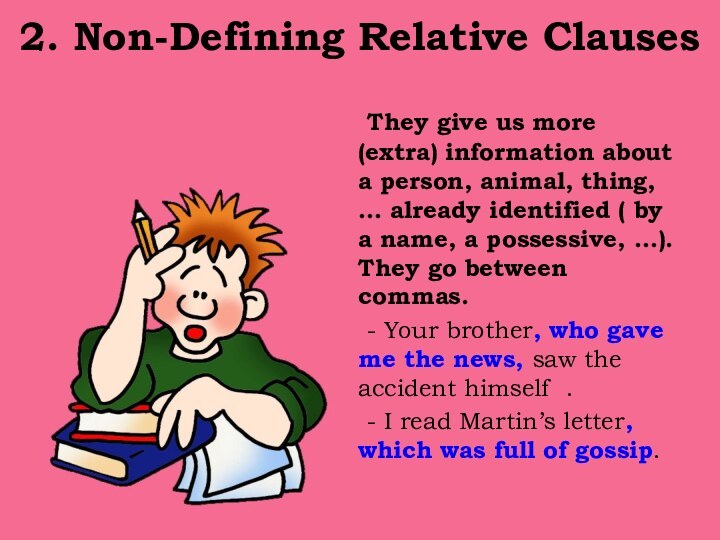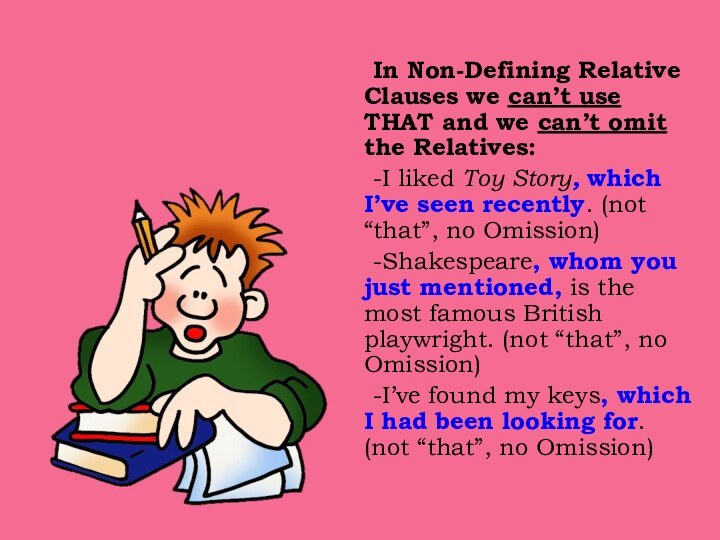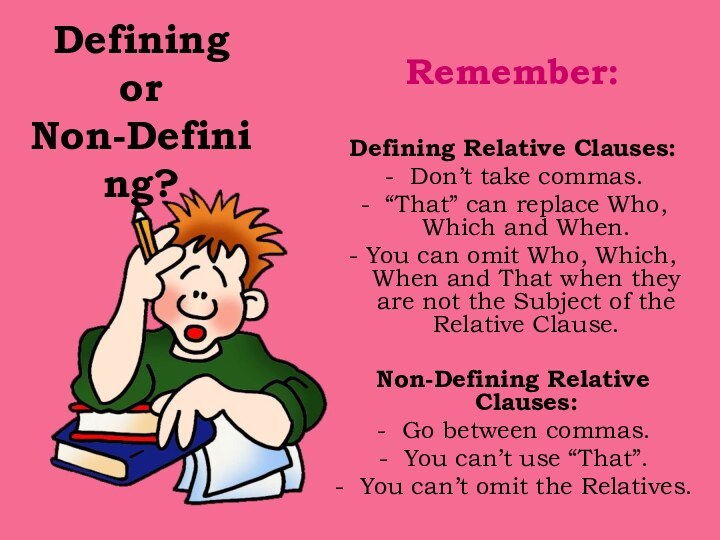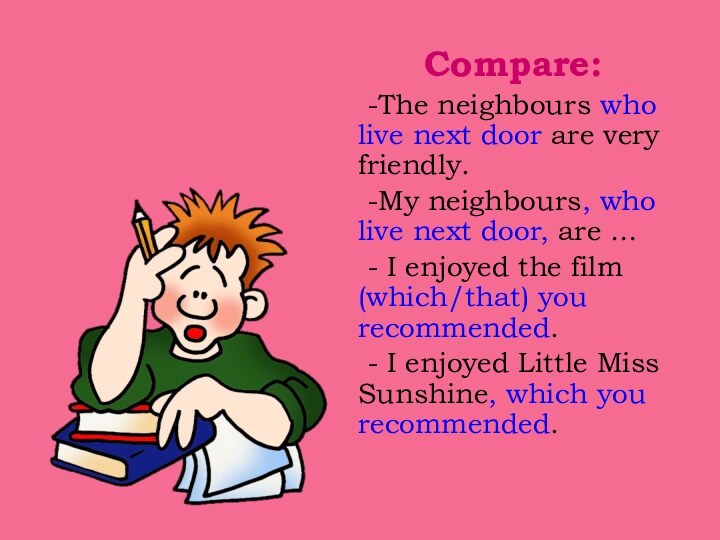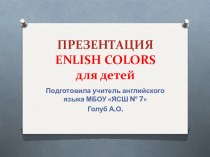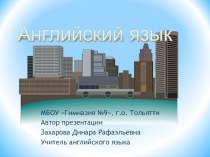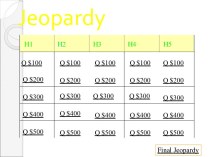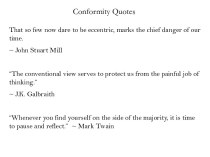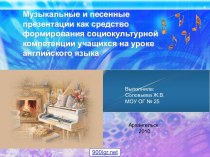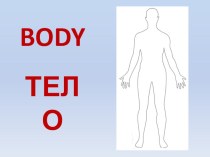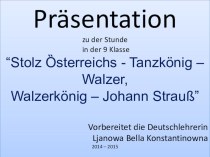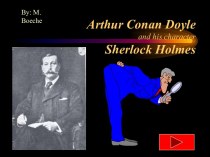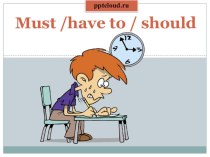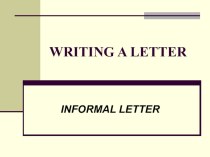Слайд 2
Relative Clauses are formed by joining 2 sentences:
-
“Peter is the student”+ “He comes from Glasgow”:
“Peter
is the student WHO comes from Glasgow”.
- “The books are on the table” + “They are mine”:
“The books WHICH are on the table are mine”.
- “I’ve just met Tom” + “Tom seems to be a nice guy”: “I’ve just met Tom, WHO seems to be a nice guy”
“I’d love to visit London”+ “It is a beautiful city”:
“I’d love to visit London, WHICH is a beatiful city”
Слайд 3
Remember:
When we join 2 sentences with a Relative
Pronoun or Adverb, we have to omit the noun/
pronoun/ possessive that the Relative replaces (In the previous sentences: He/ They/Tom /it)
Relative Clauses go RIGHT AFTER the Noun they modify.
Слайд 4
1. Defining Relative Clauses
They define, give us essential
information about a general term or expression. Defining Relative
Clauses are not put in commas:
- I talked to the man who gave you the news.
- I read the letter which came this morning.
(Which man ? The one who gave you the news.)
(Which letter? the one that arrived this morning.)
Слайд 5
Remember:
Use WHO to refer to people and WHICH
to refer to animals, things, …
“THAT” can replace
WHO and WHICH in Defining Relative Clauses :
Did you know the girl WHO/THAT came to the party yesterday?
The book WHICH/THAT I’m reading is very interesting.
Слайд 6
OMISSION OF WHO, WHICH
AND THAT:
WHO, WHICH and
THAT can be the Subject of the Relative Clause:
-
I’ve talked to the man WHO sold me his car. (Who replaces The man and is the Subject of the Clause “sold me his car”)
- The dog WHICH barks every night is my neighbour’s. (Which is the Subject of the clause “barks every night”)
Слайд 7
They can also be the Object or go
after a preposition:
- I loved the film (WHICH/ THAT)
we saw last night.
- The man (WHO/THAT/ WHO) you mentioned is a writer.
- I’ve found the keys for (WHICH/THAT) I was looking. => I found the keys I was looking for.
- Who was the boy to (who) you were talking? => Who was the boy you were talking to?
When The Relative is the Object, it can be (and it is usually) omitted in Defining Relative Clauses.
Слайд 8
Other Relatives:
WHEN (THAT)
shows Time:
- I will
never forget the day + I met my best
friend that day: I’ll never forget the day (WHEN/THAT) I met my best friend.
(WHEN can also be omitted in Defining Relative Clauses).
Слайд 9
WHERE
refers to Places:
-This is the hotel +
We are staying at the hotel next weekend:
This is
the hotel WHERE we are staying next weekend.
- The city is interesting + my sister is living in the city:
The city WHERE my sister is living is interesting.
Слайд 10
WHOSE
shows Possession and it replaces a Possessive adjective
or an ’s possessive:
- The man was crying +
His house was on fire:
The man WHOSE house was on fire was crying.
- Have you met the people? + Their son is moving to Washington: Have you met the people WHOSE son is moving to Washington?
Слайд 11
WHOM
is used instead of WHO in Formal Speech
when it is the Object of the Relative Clause
or after a preposition:
- I couldn’t talk to a friend + I called him last night: I couldn’t talk to the friend WHOM I called last night.
- I don’t know the student + The teacher was shouting at the student: I don’t know the student at WHOM the teacher was shouting.
Слайд 12
2. Non-Defining Relative Clauses
They give us more (extra)
information about a person, animal, thing, … already identified
( by a name, a possessive, …). They go between commas.
- Your brother, who gave me the news, saw the accident himself .
- I read Martin’s letter, which was full of gossip.
Слайд 13
In Non-Defining Relative Clauses we can’t use THAT
and we can’t omit the Relatives:
-I liked Toy Story,
which I’ve seen recently. (not “that”, no Omission)
-Shakespeare, whom you just mentioned, is the most famous British playwright. (not “that”, no Omission)
-I’ve found my keys, which I had been looking for. (not “that”, no Omission)
Слайд 14
Defining or Non-Defining?
Remember:
Defining Relative Clauses:
Don’t take commas.
“That” can
replace Who, Which and When.
- You can omit Who,
Which, When and That when they are not the Subject of the Relative Clause.
Non-Defining Relative Clauses:
Go between commas.
You can’t use “That”.
You can’t omit the Relatives.
